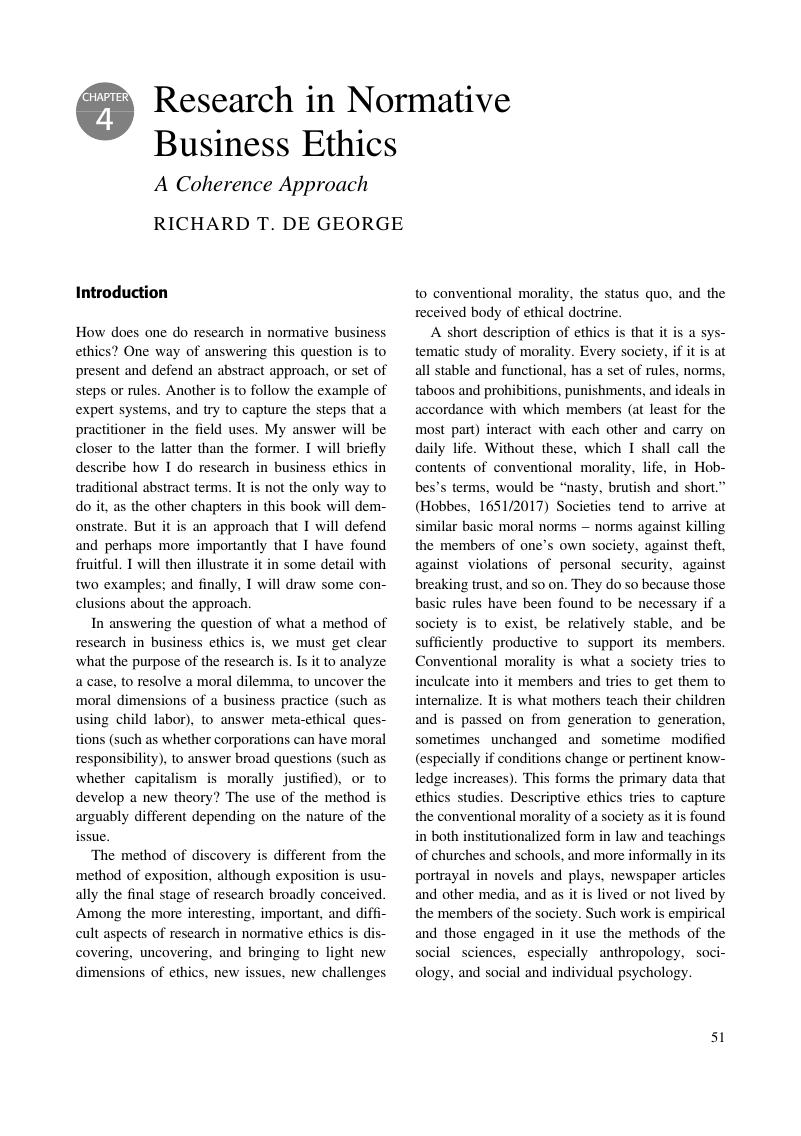Book contents
- Cambridge Handbook of Research Approaches to Business Ethics and Corporate Responsibility
- Cambridge Handbook of Research Approaches to Business Ethics and Corporate Responsibility
- Copyright page
- Contents
- Figures
- Tables
- Contributors
- Introduction
- Part I Philosophical Approaches
- Historical Approaches
- Normative Approaches
- Chapter 4 Research in Normative Business Ethics
- Chapter 5 The Universalist Approach and Kant in Business Ethics
- Part II Empirical Approaches
- Part III A Researcher in the Spotlight
- Index
- References
Chapter 4 - Research in Normative Business Ethics
A Coherence Approach
from Normative Approaches
Published online by Cambridge University Press: 10 November 2017
- Cambridge Handbook of Research Approaches to Business Ethics and Corporate Responsibility
- Cambridge Handbook of Research Approaches to Business Ethics and Corporate Responsibility
- Copyright page
- Contents
- Figures
- Tables
- Contributors
- Introduction
- Part I Philosophical Approaches
- Historical Approaches
- Normative Approaches
- Chapter 4 Research in Normative Business Ethics
- Chapter 5 The Universalist Approach and Kant in Business Ethics
- Part II Empirical Approaches
- Part III A Researcher in the Spotlight
- Index
- References
Summary

- Type
- Chapter
- Information
- Cambridge Handbook of Research Approaches to Business Ethics and Corporate Responsibility , pp. 51 - 68Publisher: Cambridge University PressPrint publication year: 2017

